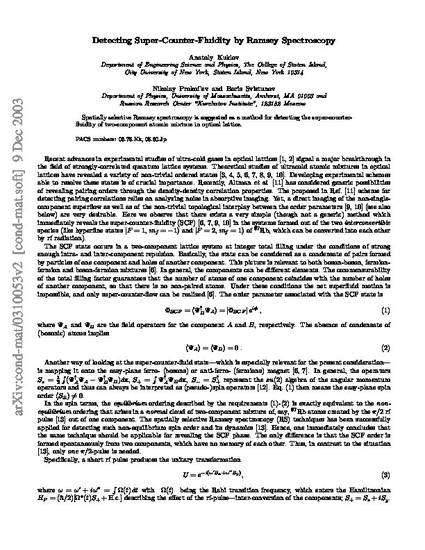
A two-component system of ultracold atoms in an optical lattice at integer total filling factor and strong enough onsite repulsion can form a supercounterfluid (SCF) phase, which can be viewed as the Bose-Einstein condensate (BEC) of pairs formed by particles of one sort and holes of another sort. In this quasimolecular BEC, no single-component BEC exists, and the net atomic flow is prohibited. We show that, in the case of the interconvertible species (like hyperfine states of Rb), the corresponding order parameter can be detected by spatially selective Ramsey spectroscopy. The method can be used, in particular, for revealing a persistent supercounterflow as well as the SCF vortices—imposing a single π/2 rf-pulse will result in a specific phase-separation pattern. The detection of the SCF should be considered in conjunction with observing no typical BEC interference fringes for each component. The consequences of the strong SCF correlations persistent in the two atomic BECs phase are discussed as well.
Available at: http://works.bepress.com/boris_svistunov/65/
